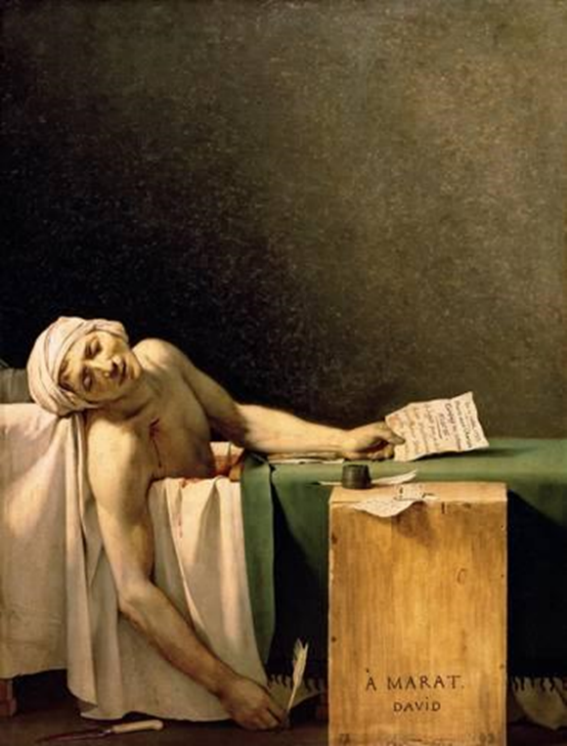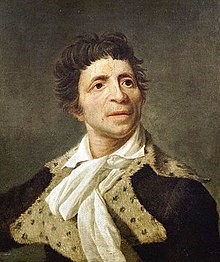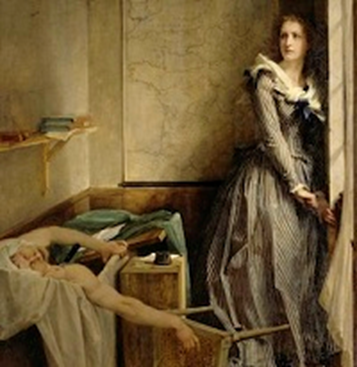9 November 2018

At half-term I was approached by a former student. We discussed what he was doing now and the time that had passed since he left Durham Johnston; he was a student between 2007 and 2014. As the conversation drew to a close, he said: “By the way Sir, I do still remember. He was in the bath because he suffered from dermatitis herpetiformis. Charlotte Corday stabbed him and his body was painted by Jacques Louis David. That helped me to win first prize in a pub quiz at university.” If you are confused by the above, let me offer an explanation.
 In a recent bulletin I referenced the strange debates that go on regarding the relative importance of knowledge versus skills, or curriculum breadth versus progress. Very few of those debates discuss the importance of engagement, or capturing the imagination of students. When are excited about studying or learning, all of the other factors start to fall into place. I started my A Levels in 1987 and vividly remember my teacher explaining that, in essence, we were choosing to study history because at some point we had been engaged by ‘a good story, well told.’ She demonstrated this by sharing the story of the Death of Marat, most famously depicted by Jacques Louis David in the 1793 painting, which shares that name. She wanted us to be good historians, to write with fluency and to base our analysis on detailed research and supporting evidence, but he also wanted to motivate us and to offer ‘hooks’ that provoked thought and made us look forward to the subject. Successful teachers come in all shapes and sizes, but one of the qualities that they share is the ability to motivate. A former Deputy Headteacher used to make a comparison between good teachers and the ‘Rime of the Ancient Mariner.’ Those teachers had the ‘glittering eye’; even if they want to, students can’t look away.
In a recent bulletin I referenced the strange debates that go on regarding the relative importance of knowledge versus skills, or curriculum breadth versus progress. Very few of those debates discuss the importance of engagement, or capturing the imagination of students. When are excited about studying or learning, all of the other factors start to fall into place. I started my A Levels in 1987 and vividly remember my teacher explaining that, in essence, we were choosing to study history because at some point we had been engaged by ‘a good story, well told.’ She demonstrated this by sharing the story of the Death of Marat, most famously depicted by Jacques Louis David in the 1793 painting, which shares that name. She wanted us to be good historians, to write with fluency and to base our analysis on detailed research and supporting evidence, but he also wanted to motivate us and to offer ‘hooks’ that provoked thought and made us look forward to the subject. Successful teachers come in all shapes and sizes, but one of the qualities that they share is the ability to motivate. A former Deputy Headteacher used to make a comparison between good teachers and the ‘Rime of the Ancient Mariner.’ Those teachers had the ‘glittering eye’; even if they want to, students can’t look away.
In 1997 I started teaching at Durham Johnston and the A level textbook that we used featured David’s painting. I used the story of the painting as an introduction for the class and continued to do so with a variety of classes from that point on. Not always because it was part of the curriculum, but because it highlighted that with the right level of engagement all students could improve their long-term memory, ask good questions and enjoy the subject. This is particularly important because not all students don’t want to learn, or have confidence in their ability.
There are a number of ‘good stories’ associated with the above painting, possibly too many for a short Friday Bulletin. Marat was a key figure in the French Revolution that began in 1789, but prior to his revolutionary role had been a doctor, living in Newcastle between 1770 and 1775. Whilst in the North East of England he found work as a vet and travelled between Newcastle and London on the ‘Great North Road’, or, as we call it, the A167 which goes directly past the school. Marat fortune rose and fell during the revolution and, whilst out of favour, he hid in the Parisian sewers. Whilst doing so, he developed a skin disease linked to contact with rat’s urine. This led to issues with irritation and itching and Marat took to spending significant amounts of time in the bath, soaking in a herbal solution with wet muslin cloth wrapped around his body to keep it hydrated. When in the ascendancy, Marat had demanded the execution of enemies of the revolution.
Charlotte Corday was so incensed by his calls for violence that she researched where he lived, gained entry and stabbed him to death in the bath in 1793. She was  arrested and David, the key painter of the Revolution, requested that the body be kept in place so that he could complete his hagiography of Marat; a hero of the Revolution in his opinion. Whilst painting the image Marat’s body began to deteriorate and David made his (unnamed) assistant climb into the bath, hold the body above him and dangle his arm from the bath so that he could portray Marat in the best possible light. Marat’s body decomposed so quickly that when it was transported for burial along a cobbled Parisian street the vibrations shook free each of his limbs.
arrested and David, the key painter of the Revolution, requested that the body be kept in place so that he could complete his hagiography of Marat; a hero of the Revolution in his opinion. Whilst painting the image Marat’s body began to deteriorate and David made his (unnamed) assistant climb into the bath, hold the body above him and dangle his arm from the bath so that he could portray Marat in the best possible light. Marat’s body decomposed so quickly that when it was transported for burial along a cobbled Parisian street the vibrations shook free each of his limbs.
There is obviously much about the French Revolution that is complex. Those complexities will always remain, unless students are engaged, made to question and to develop a love of learning. This is true of all subjects. That was certainly true for me in 1987 and of the student I encountered at half-term. If you are a former or current student reading this, how much of that did you remember? How much has been missed out? If you are encountering the story for the first time, find out more and, in the best spirit of teaching through the ages, I will give you a test in the penultimate week of term to see how much you have committed to memory.
http://oldnovocastrian.blogspot.com/2009/09/marat-in-newcastle.html
Mr O'Sullivan

